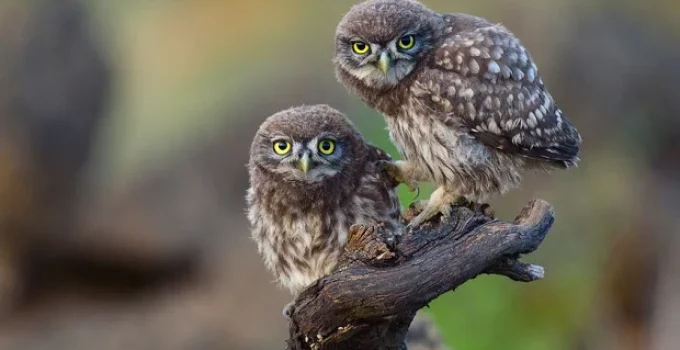Are Owls Birds?
Answer at a Glance: Owls are birds. Owls are birds belonging to the class Aves and the order Strigiformes. Birds are characterized as warm-blooded, egg-laying vertebrates with feathers, a four-chamber heart, and forelimbs modified into wings. Owls share all of these characteristics.
Dig Deeper
- What Is a Bird?
- How Are Owls Classified in the Animal Kingdom?
- Characteristics of Birds – the Class Aves
- What Makes an Owl a Bird?
- References
What Is a Bird?
The science of arranging living organisms into groups based on similar characteristics is called taxonomy. The common taxonomic rank is kingdom, phylum, class, order, family, genus, and species. [1] Using this taxonomy, birds are ranked thus:
Kingdom: Animalia (animals)
Phylum: Chordata (animals with a spinal cord)
Class: Aves (living and extinct birds)
How Are Owls Classified in the Animal Kingdom?
The class Aves is further divided into orders, families, genera, and species. Using this taxonomy, owls are ranked as thus:
Order: Strigiformes (owl)
Family: Strigidae; Tytonidae (owls are divided into two families: Strigidae, which are typical owls, and Tytonidae, which are barn owls)
There are more than 250 species of owls located across the globe. [2]
Characteristics of Birds – the Class Aves
There are 9,600 living species in the class Aves. Animals in this class are characterized as warm-blooded, egg-laying vertebrates with feathers, a four-chamber heart, and forelimbs modified into wings. [3]
What Makes an Owl a Bird?
Examining the characteristics of a bird, we can gain a deeper understanding of how an owl easily fits into this category.
Warm-Blooded: Owls are warm-blooded, which means they can maintain a constant body temperature through metabolic means. Owls, in fact, all birds, maintain a higher body temperature than mammals do, at 1.87°C higher during rest and 2.43°C higher during the active phase. Owls have a normal body temperature of 39-40°C. When exposed to hot environments, this body temperature can increase by 3-4°C. It also rises during flight. [4]
INTERESTING FACT: A bird keeps its brain cooler than the rest of its body, maintaining it at 1°C below the temperature of its body.
Vertebrates: Owls are vertebrates, which means they have a backbone. Unlike the highly flexible, moving thoracic vertebrae of the human, the bird’s thoracic vertebrae are fused to help keep the body stiff during flight. The vertebrae in the neck are highly flexible; the owl is a perfect example. [5]
The flexible vertebrae in the neck of the owl give it a great range of motion, including the ability to turn the head nearly 270° in either direction. [6]
Egg-Laying: All birds lay eggs, including owls. The number of eggs laid will vary from species to species, but they usually lay more eggs than most diurnal raptors, with the snowy owl laying between 3 and 11 eggs in a season, depending on the food supply. Owl eggs are also more spherical than any other bird group. [7]
Feathers: Like all birds, owls have feathers. Owl feathers are generally larger than other species and have several unique characteristics that make them inaudible to prey. The noiseless flight of the owl can be credited to three physical attributes of its unique wing structure: the soft serrated edges of its leading wing, the flexible fringe on the trailing edge of the wing, and the soft downy feathers at the top of the wing. [8]
Unlike many birds with showy plumage, owl feathers are typically mottled shades that blend in with their surroundings, helping them avoid predators and making them less visible to their prey.
References
- [1] Britannica Kids – “Biological Classification.”
- [2] König C, Weick F (2008). Owls: a guide to the owls of the world. Second Edition. Robertsbridge: Pica Press.
- [3] Britannica.com – “Bird – Aves, Species, Orders.”
- [4] Taylor, C. Richard, Kjell Johansen, Liana Bolis, and Knut Nielsen. A companion to Animal physiology: papers from the Fifth International Conference on Comparative Physiology held at Sandbjerg, Denmark, July 22-26, 1980. Cambridge: Cambridge University Press, 1982. Print.
- [5] Henderson State University – “Skeletal Adaptations of Birds in Flight.”
- [6] John Hopkins Medicine – “OWL MYSTERY UNRAVELED: SCIENTISTS EXPLAIN HOW BIRD CAN ROTATE ITS HEAD WITHOUT CUTTING OFF BLOOD SUPPLY TO BRAIN.”
- [7] University of Michigan Bio Kids – “Snowy Owl.”
- [8] Jaworski, J American Physical Society – “Vortex Noise Reductions from a Flexible Fiber Model of Owl Down.”
Related Products


